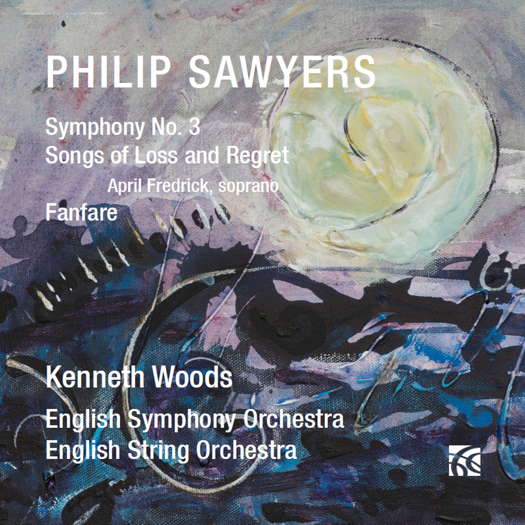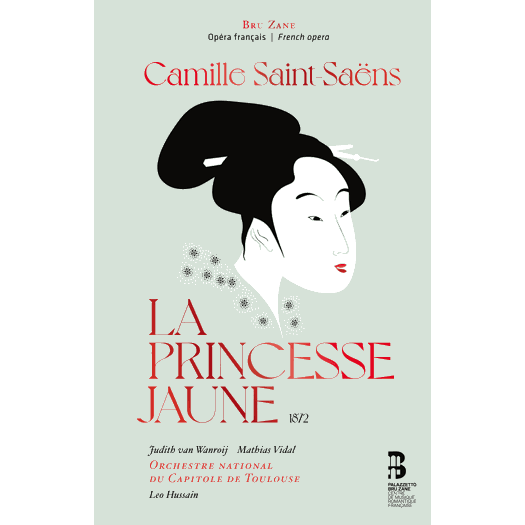- narration
- Endre Anaru
- Nelly Miricioiu
- Arabic music
- Bryan Beadle
- Schindler's List
- Justin Connolly: String Trio
- Billy Childs: Concerto for Orchestra
 DISCUSSION: John Dante Prevedini leads a discussion about Composers, individuals or collective?, including contributions from David Arditti, Halida Dinova, Robert McCarney and Jane Stanley.
DISCUSSION: John Dante Prevedini leads a discussion about Composers, individuals or collective?, including contributions from David Arditti, Halida Dinova, Robert McCarney and Jane Stanley.
 SPONSORED: CD Spotlight. View from the Celli - Philip Sawyers' Symphony No 3 impresses Alice McVeigh.
SPONSORED: CD Spotlight. View from the Celli - Philip Sawyers' Symphony No 3 impresses Alice McVeigh.
All sponsored features >>

Orientalism in Paris
'La Princesse Jaune', reviewed by GIUSEPPE PENNISI
'... an excellent vehicle for discovering a little known facet of Charles-Camille Saint-Saëns.'
Approximately a year ago, on 20 September 2020, this magazine reviewed the recording of an almost unknown opera by Charles-Camille Saint-Saëns (9 October 1835 – 16 December 1921), Le Timbre d'Argent and expressed the wish that this forgotten title could be staged again. The recording was, of course, a product of the Venice Palazzetto Bru Zane Centre de Musique Romantique Française, whose mission is to re-discover important but currently almost ignored scores of the nineteenth and early twentieth century and to provide very professional and highly artistic editions. Le Timbre d'Argent, for example, was co-produced with Paris Opéra Comique. Now, another Saint-Saëns' little jewel is presented: his first opera, La Princesse Jaune, in a CD produced with the Toulouse Théâtre du Capitole with the orchestra conducted by Leo Hussain and Judith van Wanroij and Mathias Vidal as protagonists. As the one act opera is quite short, the CD includes the six Mélodies persanes cycle too. In short, we have a sample of Saint-Saëns' orientalism, a style in fashion in Paris during the years at the end of the nineteenth century.
Saint-Saëns' best known works include the Introduction and Rondo Capriccioso (1863), the Second Piano Concerto (1868), the First Cello Concerto (1872), Danse macabre (1874), the opera Samson and Delilah (1877), the Third Violin Concerto (1880), the Third Symphony ('Organ', 1886) and The Carnival of the Animals (1886). He is known too for a considerable amount of religious music because, for several years, he was organist of La Madeleine, the official State Church of the French Second Empire. Saint-Saëns held only one teaching post, at the École de Musique Classique et Religieuse in Paris, and remained there for less than five years. It was nevertheless important in the development of French music: his students included Gabriel Fauré, among whose own later pupils was Maurice Ravel. Both of them were strongly influenced by Saint-Saëns, whom they revered as a genius.
La princesse jaune (The Yellow Princess), Op 30, is an opéra comique in one act and five scenes. It is quite far from the works the composer is best and most known for. The opera premiered at the Opéra-Comique (Salle Favart Theatre) in Paris on 12 June 1872 but was staged for only five evenings. Then it disappeared from the billboards. At the opera's 1872 premiere, it was grouped into a set of one-act operas which included Emile Paladilhe's Le passant and Georges Bizet's Djamileh. The evening was a complete flop and music critics were hostile to all three operas, a fact not surprising for Saint-Saëns, as critics were regularly hostile towards his music during this point in his career.
Like many French artists at this time, Saint-Saëns was influenced by the 'Japonism' movement. He appealed to this public taste by choosing a story about a Japanese princess, although the plot is set in the Netherlands. The music has a light and brisk quality that uses pentatonic harmony to evoke an oriental sound.
Listen — Saint-Saëns: Ouverture (La Princess Jaune)
(track 1, 0:00-1:00) ℗ 2021 Palazzetto Bru Zane :
The story follows Kornélis, a student who is fascinated by all things Japanese, and his cousin Léna, who is in love with him. Kornélis, however, is too obsessed with his portrait of Ming, a Japanese girl, to notice his cousin's affections for him. In a fantastical dream caused by a drug, Kornélis is transported to Japan. At first enthralled, he eventually becomes disillusioned as he comes to the realization that he is in love with Léna.
The atmosphere is set in the overture as well as by the introductory arias by the two protagonists.
Listen — Saint-Saëns: Outsou Sémisi Kamini (La Princess Jaune)
(track 3, 0:00-0:47) ℗ 2021 Palazzetto Bru Zane :
Listen — Saint-Saëns: J'aime, dans son lointain mystère (La Princess Jaune)
(track 5, 0:24-1:07) ℗ 2021 Palazzetto Bru Zane :
The most interesting number is Kornelis' hallucination piece Vision dont mon âme éprise.
Listen — Saint-Saëns: Vision dont mon âme éprise (La Princess Jaune)
(track 9, 1:31-2:15) ℗ 2021 Palazzetto Bru Zane :
The final duet is remarkable with the simple plot's happy ending.
Listen — Saint-Saëns: Ce doux mot qu'ignorant de moi-même (La Princess Jaune)
(track 15, 5:59-6:56) ℗ 2021 Palazzetto Bru Zane :
The single act opera lasts almost half a hour, and the CD also includes Saint-Saëns' cycle Mélodies persanes, six songs - La Brise, La Splendeur vide, La Solitaire, Sabre en main, Au cimetière and Tournoiement) for baritone, soprano, mezzo and tenor. The cycle was composed around 1870, and so was almost contemporary to La Princesse Jaune. It shows a different aspect of orientalism in France during those years.
As explained in the elegant book which includes the CD, Jules Massenet's Poème d'avril, then his Poème du souvenir (1866/68), had provided an example of how to adapt the song-cycle model that had flourished across the Rhine since Beethoven's An die ferne Geliebte. Saint-Saëns, sympathetic to innovation and swayed by the tone of the preface to Nuits persanes by Armand Renaud (1836-1895) - 'No more schooling, no more flag, no more yoke!' - selected six poems from this thick volume, ordering them in such a way as to bring out their complementary qualities.
Inspired by recent translations of Attar, Khayyam or Hafiz, Renaud's verses are flat, unpolished, and sometimes little better than doggerel. However, Saint-Saëns selected the best poems, whose direct expression suited the rapid pace he favoured. One can forgive him for adding a few whimsical Moorish touches, since exoticism is the perfect way to ready the palate for some piquant harmonic, rhythmic or melodic barbarisms. La Brise with its driving rhythm is an appetizer. La Splendeur vide, which is more profound, conveys the contradiction of its title (Empty Splendour) by means of light-filled harmonic gaps.
Listen — Saint-Saëns: La Splendeur vide (Mélodies persanes)
(track 18, 1:47-2:46) ℗ 2021 Palazzetto Bru Zane :
La Solitaire, an ardent, sensual song which dips into the lower register of the voice, gives the lie to Saint-Saëns' reputation for coldness. Sabre en main is in the style of a march - alla breve rhythm and imperious vocal runs - and its extensive piano coda allows the singer to prepare for the sustained quiet of Au cimetière in which the vocal line navigates its way through chords as upright as a line of funerary columns. Tournoiement is a dazzling flight of fancy that marks both the end of the song cycle and the mystic.
Each song of the cycle is worth listening to. I appreciated particularly La Splendeur vide sung by the baritone Jérôme Boutilller and Le Solitaire sung by the mezzo Eléonore Pancrazi.
Listen — Saint-Saëns: La Solitaire (Mélodies persanes)
(track 19, 0:00-0:48) ℗ 2021 Palazzetto Bru Zane :
The interlude is charming.
Listen — Saint-Saëns: Interlude (Mélodies persanes)
(track 21, 2:17-3:04) ℗ 2021 Palazzetto Bru Zane :
In short, this is an excellent vehicle for discovering a little known facet of Charles-Camille Saint-Saëns.
Copyright © 30 September 2021
Giuseppe Pennisi,
Rome, Italy

CD INFORMATION - SAINT-SAËNS: LA PRINCESSE JAUNE


